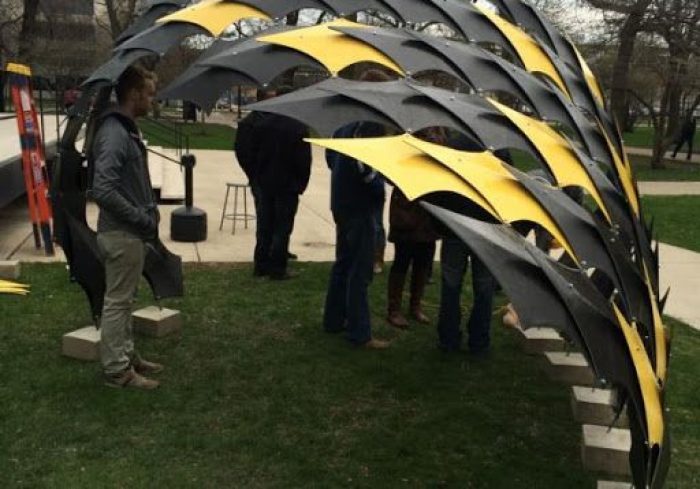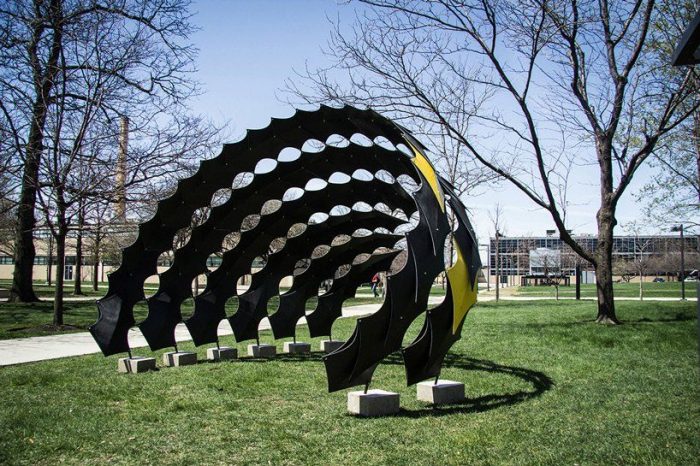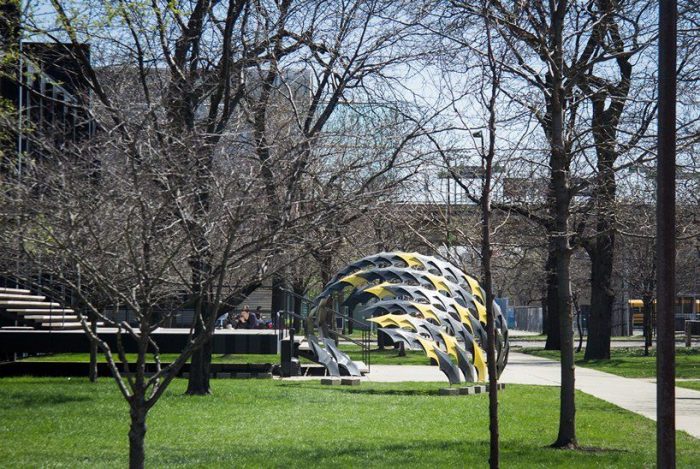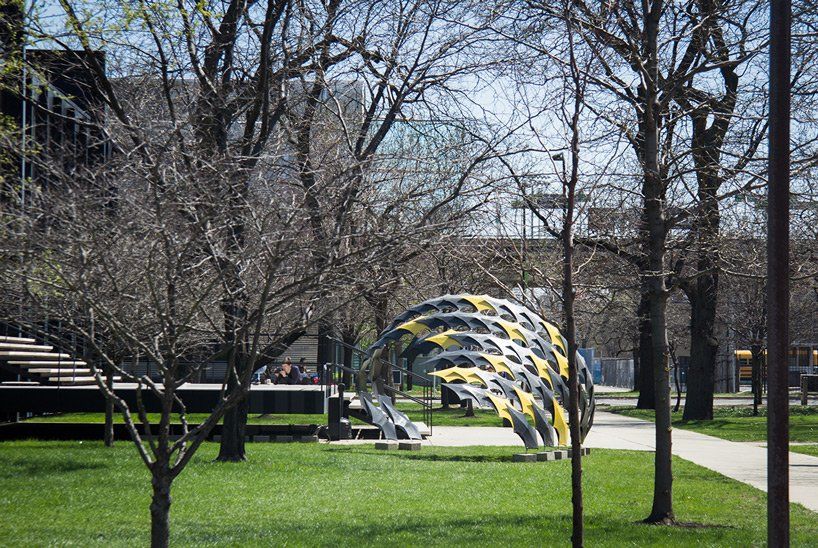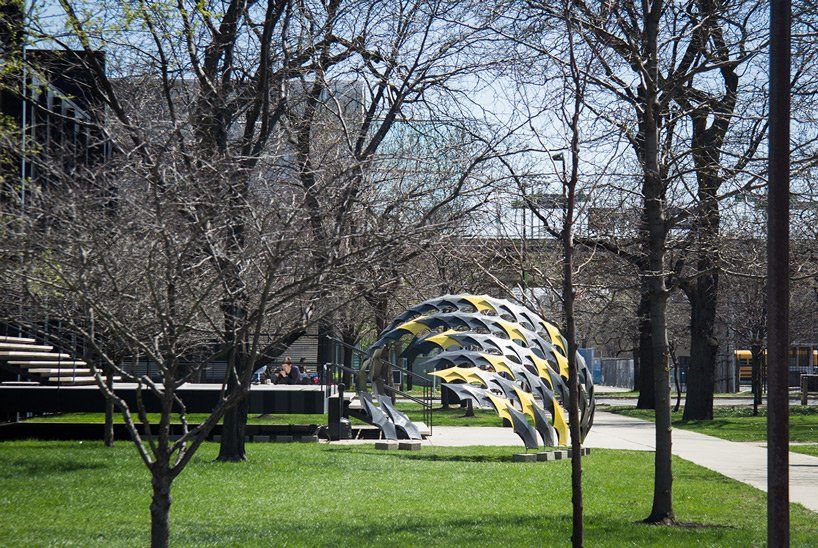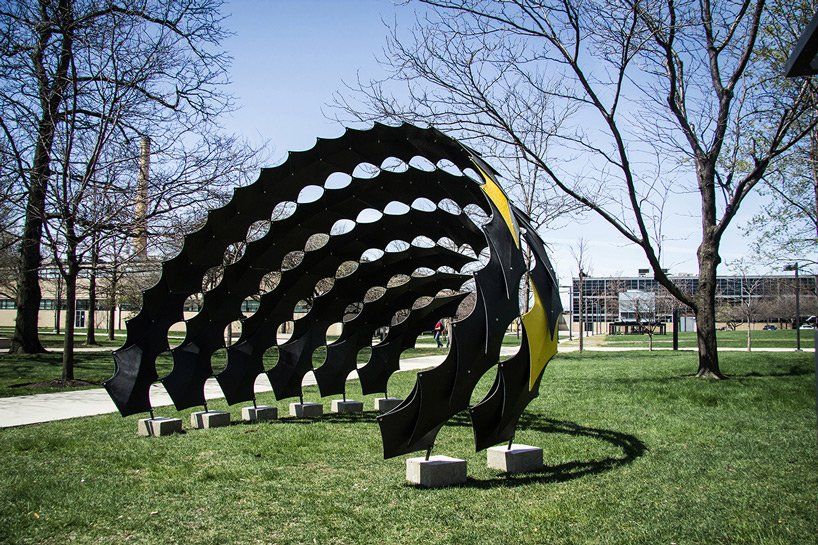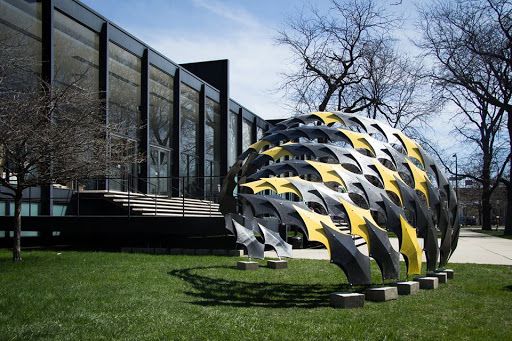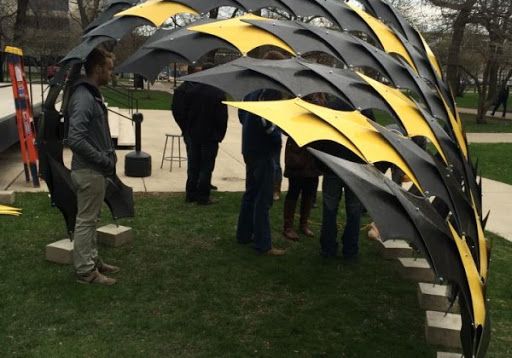Fiber wave | Carbon_Lab Illinois at IIT
In contrast to Mies van der Rohe’s linear and ‘transparent’ design of the College of Architecture building at the Illinois Institute of Technology in Chicago, the shell arches of the Fiber wave installation supply a more curvaceous quality to the front of the building. Although not necessarily linked in design methodology, similar qualities can be related. Like the entrance stairs of the building, the installation gives the appearance of floating atop concrete blocks. In addition to this, like the building, the shell is fabricated from an industrial material – carbon fiber.
The Carbon_Lab at the College of Architecture at IIT is attempting and succeeding at using carbon fiber outside of its normal industrial usages. It is commonly used in the automotive and aerospace industries for its lightweight and structural strength. Carbon fibers adaptive qualities, allow for its flexible and malleable cloth-like state to be transformed and molded when coated with epoxy resin.
This full scale installation uses rows of flexible shells that are connect laterally at two points on either side and then vertically by another set of rings creating a wavelike structure suitable of its FIBERwave name. Tension cables are then run through the connected shells in order to give the structure its full shape. The ring and the differentiation in tension provided by the cables allow this structure to dynamically undulate and morph. When the cables are pulled to their highest potential the shells interlock and the arches are at their fullest height and vise versa when the cables are loosened.
This as a result creates a dynamic and adaptive parametric structure that can adjust to the environment over time. Carbon_Lab’s ultimate aim is to explore new composite materials and their architectural expression through parametric design. These lightweight composite materials such as carbon fiber, can be easily explored and further researched with the help of digital modeling, fabrication, craft skills, and attention to detail in order to perhaps influence the way we build in the future.
By Ariela Lenetsky
Courtesy of Carbon_Lab Illinois Institute of Technology
Courtesy of Carbon_Lab Illinois Institute of Technology
Courtesy of Carbon_Lab Illinois Institute of Technology
Courtesy of Carbon_Lab Illinois Institute of Technology
Courtesy of Carbon_Lab Illinois Institute of Technology


